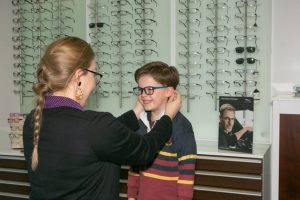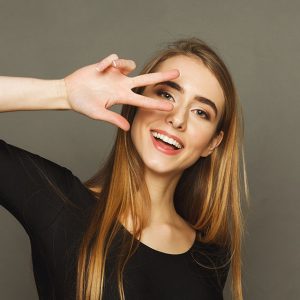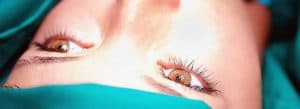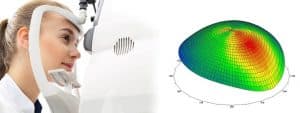Does my Baby have a Vision Problem?
Infant eye exams are essential to ensure your baby’s visual development meets their developmental milestones. Most baby’s eyes are assessed by a neonatologist within a
Read More2021 Update: Autism (ASD) and Vision
The latest information on autism (ASD) and how optometrists can provide life-changing interventions. Studies of eye clinic records suggest that children with autism (ASD) and
Read More7 Common Pediatric Eye Conditions
Almost 20% of American children under 18 have a diagnosed eye or vision condition. Diagnosing eye problems in childhood can help minimize potential damage and makes treatment faster and more effective. That’s why parents should know about the most common pediatric eye problems and their symptoms.
Read More2021 Update: Vision Therapy Research
Vision therapy is an evidence-based science with over 260 published articles on its effectiveness. Are looking for published research on VT? Provided below are just
Read More2021 Update: Lazy Eye and Adults
Lazy eye is estimated to affect up to 5% of all adults. For many decades, it has been thought that only children under the age
Read More2021 Update: Vision Therapy for Adults
Vision therapy can be more effective for adult patients, as they are typically more motivated in therapy.
Once an adult starts to notice the results of vision therapy with their own eyes they realize how beneficial it can be for them, motivating them to improve even further.
What Are Visual Efficiency Problems?
Poor visual efficiency skills can negatively impact performance in school, at the office, and on the sports field. Understanding and knowing what to look out for can help with early detection and treatment of visual problems – leading to improved school grades and sports achievements.
Read MoreCataracts: Top 5 Myths and Facts
Have you been told you have cataracts, but not sure about the myths and facts? Here are the top 5 myths and facts about cataracts.
Read MoreTop 5 Myopia Myths
Do you want to know the truth about the top 5 myopia myths? Myopia affects 1.45 billion people worldwide and is the most common refractive
Read MoreWhich Eye Conditions Can Affect Learning?
According to the College of Optometrists In Vision Development (COVD), 25% of all children have an undiagnosed vision problem impacting their school grades. If your
Read MoreCould a Child with ‘20/20 Sight’ Have a Vision Problem?
Studies have found that 1 out of 4 school children suffer from a vision problem that impacts their learning. If your child has 20/20 vision,
Read MoreSandwiches and Vision Therapy?
A ‘sandwich’ is when pieces work better together, than each piece on its own … but what has this to do with vision therapy? This
Read MoreResearch Reveals New Effective Treatment for Adults with Lazy Eye
Amblyopia, also known as “lazy eye”, is a vision problem that affects both children and adults. Lazy eye typically begins in childhood and causes a
Read MorePtosis: Why Is My Eyelid Drooping?
What is ptosis? Ptosis, commonly referred to as a droopy eyelid, occurs when the upper eyelid droops down over the eye. A droopy eyelid can
Read MoreDoes Amblyopia (Lazy Eye) Affect Eye-Hand Coordination?
What is a lazy eye and how does it develop? Amblyopia, commonly known as lazy eye, is a neuro-developmental vision condition that begins in early
Read MoreStrabismus Surgery
What is strabismus surgery? Strabismus, also known as “crossed-eyes” occurs when the two eyes are unable to achieve proper alignment to focus on an object.
Read More7 Signs Your Child Might Have a Lazy Eye
Do you know the signs to look for to identify lazy eye in your child? A lazy eye is generally difficult to recognize because it usually develops in only one eye, without a noticeable eye turn. It is important to be aware of the signs that may indicate a lazy eye, since in most cases, the condition is not recognized easily – though it can significantly affect a child’s quality of life.
Read MoreVision Therapy for Adults
Vision therapy is a proven and effective solution for adults as well as children.
Do you feel like your work performance is impacted by headaches or eye strain?
Are you finding it stressful to meet deadlines?
Vision therapy is a remarkably effective program that improves vision skills to achieve more comfortable vision for reading and computer use – enhancing your workplace productivity.
Corneal Diseases
What is the cornea? The cornea is the clear, protective outer layer of the eye. It acts as a barrier and filter— protecting our eyes
Read MoreWhat is Low Vision?
Do you or a loved one have low vision? Low vision is diagnosed when vision cannot be fully corrected with glasses, contact lenses, or eye surgery— allowing you to participate in every day activities. It is often accompanied by blurred vision, blind spots or tunnel vision— and may also be called legal blindness. Low vision may prevent you from driving, watching TV, reading, using a computer or participating in your favorite hobbies.
Read MoreBifocals for Lazy Eye
What are bifocals? Bifocals are glasses that contain two lens prescriptions, one for near vision and one for distance vision. The lens powers are usually
Read MoreLazy Eye FAQs
These are the 12 most frequent questions asked to vision therapy eye doctors on lazy eye. You may easily find answers to your questions below. If you still have questions, contact your nearest eye doctor experienced in children’s vision, lazy eyes and vision therapy.
Read MoreLazy Eye: The Latest Research
The Pediatric Eye Disease Investigator Group (PEDIG) research provided evidence-based studies on treatment for children with lazy eye. PEDIG research on the effectiveness of lazy
Read MoreA Guide to Children’s Eye Diseases
As your child grows older, annual exams are crucial to ensure that their eyes continue to develop normally, and to detect any changes in vision or ocular health. Importantly: vision screenings conducted by schools are not a substitute for a comprehensive eye exam – ocular diseases and many vision problems cannot be identified through a screening.
Read MoreGuide to Eye Turns
Eye turns, are also known as strabismus, and affect over 1 in 20 babies and toddlers. With early detection and eye care treatment, with eyeglasses and vision therapy, the eye turn can often be resolved, without relying on complicated eye surgeries.
Read MoreVision for School
Is your child not reaching their potential at school? For a child to succeed in school they need excellent vision and strong visual skills, including eye tracking, focusing, binocular vision and visual processing. These skills can be enhanced with the correct eyewear and vision therapy.
Read MoreUntil What Age Can a Lazy Eye Be Treated?
Recent research from the National Eye Institute (NEI) shows that a lazy eye can be successfully treated at least up to age 17. Lazy eye
Read MoreVision Development and Milestones
It is important to watch your baby’s development to ensure they reach their milestones. A child’s vision is a complex combination of the brain, the eyes and the vast array of nerves that connect them. At birth, this visual system is still immature and continues to develop throughout the child’s early years.
Read MoreVision Therapy
Just checking how exerpts work
Read MoreLazy Eye: Success Stories
Read some real-life stories from patients who have successfully completed vision therapy for lazy eye. *Names have been changed for protection of privacy.
Read MoreMy Lazy Eye Was Misdiagnosed
“Thanks to Vision Therapy, I Gained 3D Vision!”. A Personal Story by Rachel Cooper, Past Director of the Optometrists Network.
Read MoreVision Therapy: Evidence-Based Research
Vision therapy is an evidence-based treatment modality. Do you want to see a list of references for published research articles on vision therapy and its effectiveness? Some of the references are available as links to original published research or complete articles in PDF format.
Read MoreHow Is Lazy Eye Treated?
A variety of treatment options have been shown to treat lazy eye – the aim is to strengthen the eye-brain connections necessary for binocular vision. Traditionally, it has been thought that lazy eye treatment should begin before a child reaches around eight years old, however recent research shows that even after this age, lazy eye can be successfully treated. That being said, the earlier the condition is diagnosed, the better the treatment outcome will be.
Read More
































